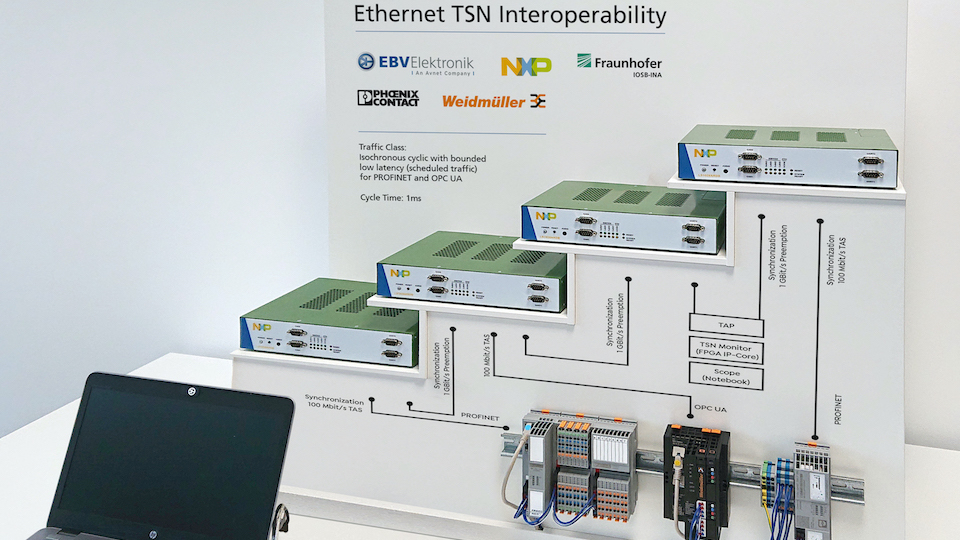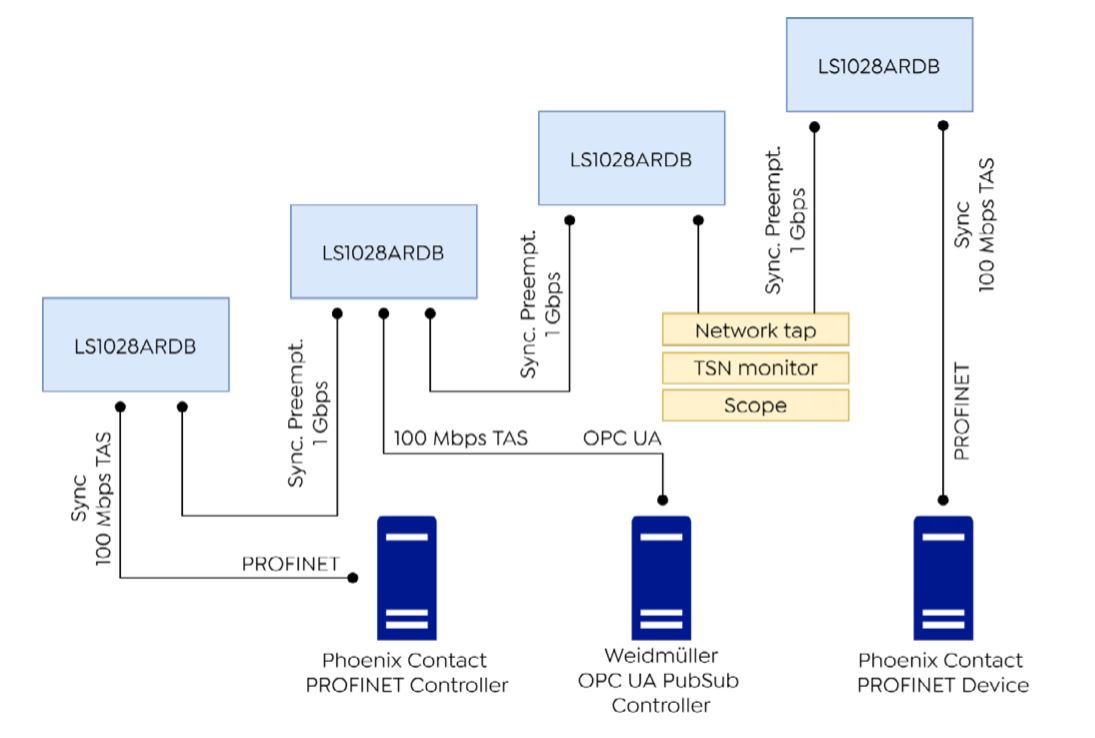Industrial network planning is a complicated task and has to take many different aspects into account. Various TSN demonstrators, testbeds, and case studies are very valuable in this process, especially in the early stages of network planning and development. They provide valuable insight into what can be expected from a particular TSN configuration. One such TSN demonstrator was designed by Fraunhofer IOSB-INA in collaboration with EBV Elektronik, using the latest TSN-enabled networking solutions from NXP Semiconductors.

The demonstrator showcases Ethernet TSN interoperability, using an isochronous cyclic communication pattern with bounded low latency. It is based on the LS1028ARDB reference design board from NXP, which is built around the QorIQ® Layerscape LS1028A industrial application processor, running Open Industrial Linux (OpenIL). The network implements TSN mechanisms according to the existing draft IEEE/IEC 60802 TSN IA standard (time synchronization, time-aware scheduling, and frame preemption). Besides the four LS1028ARDB connected in a daisy-chain topology with the link speed of 1 Gbps, the demonstrator includes some additional equipment from other vendors: Phoenix Contact provides PROFINET controller and device, simulating RT field-level communication at 100 Mbps. At the same time, the Weidmüller OPC UA Pub/Sub controller publishes iso-chronous packets, also at 100 Mbps. Finally, the communication is visualized on the oscilloscope screen, allowing any timing inconsistencies to be observed.

The oscilloscope screen shows packets for both protocols, and no jitter can be observed, even with the cycle time as low as 1 ms. On top of the consistent timing, Ethernet TSN allows plug & play action, which can be demonstrated by disconnecting and then re-connecting one of the controllers (e.g., OPC UA). After a short initialization interval, the communication is restored as before, not influencing jitter or data latency of the ongoing traffic (e.g., PROFINET).
This demonstrator clearly shows the advantage of using Ethernet TSN and its capability to support multi- protocol, multi-vendor, and multi-rate communication within a single network, offering an excellent platform for converged industrial networking.
